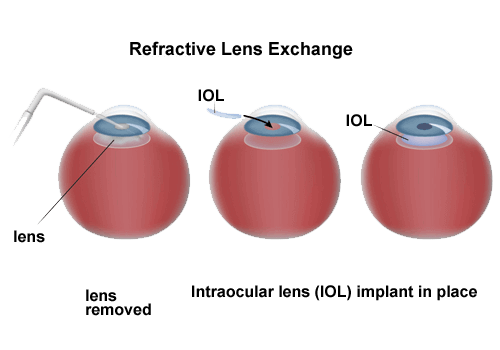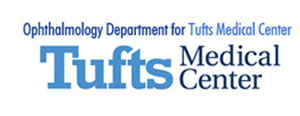Cataracts are one of the most common age-related eye conditions. Almost half of all adults develop at least one cataract by age 75.
But you don’t have to be a certain age or considered elderly to develop cataracts. Once you’re over 40, you’re at risk of developing them.
However, there is a way to avoid cataracts while improving your vision! Refractive lens exchange (RLE) is a vision correction procedure that can correct refractive errors and presbyopia, another common age-related eye condition.
If you have refractive lens exchange, you can’t develop cataracts! Keep reading to find out how to avoid cataracts by having refractive lens exchange!
What is Refractive Lens Exchange?

Refractive lens exchange is a vision correction procedure that removes your eye’s natural lens and replaces it with an artificial one. This artificial lens is called an intraocular lens, or IOL.
Different kinds of IOLs can help you see better to different degrees, depending on which one you choose. However, all IOLs can improve your vision, especially if you have presbyopia.
Presbyopia is very common in adults over 40. The age-related eye condition makes it harder to focus up close as the eye’s natural lens becomes less flexible.
Most people with presbyopia need reading glasses to see well up close. But if you undergo refractive lens exchange, you can reduce and sometimes even eliminate the need for reading glasses.
Refractive lens exchange can also help with existing refractive errors like nearsightedness, farsightedness, and astigmatism, reducing the need for glasses and contact lenses. It’s also a bonus that refractive lens exchange prevents you from developing cataracts later in life.
Cataracts and Cataract Surgery
Cataracts develop on the eye’s natural lens, making it grow cloudy. As the cataract grows, the lens becomes more cloudy, impacting your ability to see clearly.
The cloudier your lens becomes, the harder it is to see through. At first, cataracts may not cause any noticeable symptoms. Eventually, they cause several visual symptoms, from blurry vision to glare to impaired vision at night, especially while driving.
The only way to treat cataracts is through cataract surgery. But cataract surgery is only recommended when your cataracts are advanced enough to interfere with your quality of life.
This can take years as cataracts develop very slowly. So, how is cataract surgery relevant when talking about refractive lens exchange? Because the two procedures are virtually identical.
Refractive Lens Exchange vs. Cataract Surgery

Refractive lens exchange and cataract surgery are virtually the same procedure. Both vision correction procedures involve removing the eye’s natural lens and replacing it with an IOL.
However, the only difference is that you’ll have the lens removed for cataract surgery, eliminating the cataract formed on it. For refractive lens exchange, you don’t need to have a cataract to remove your natural lens.
Because these procedures are almost identical, you don’t need cataract surgery after having refractive lens exchange. Once your natural lens is replaced with an IOL, it’s no longer possible to develop cataracts.
Cataracts can only form on your natural lens because they cannot develop inside an IOL. After you’ve undergone refractive lens exchange, you’ll no longer have to think about if you’ll have cataracts later in life.
If you’re in your 40s, you may have presbyopia and cataracts in the early stages of development. In that case, your eye doctor wouldn’t recommend cataract surgery.
Early-stage cataracts usually won’t impact your vision, meaning there’s no reason to have cataract surgery. However, if you’re over 40, have presbyopia, are nearsighted, or have another refractive error, you can undergo refractive lens exchange to improve your vision.
This would also prevent your cataract from advancing as you would have it removed. Preventing cataracts is a great reason to have refractive lens exchange. But RLE can also do much more by giving you incredible, long-lasting visual improvement!
Achieve the Vision of Your Dreams

By replacing your natural lens, an IOL can help you see better. But certain IOLs can help you see better than others.
Only one kind of IOL is considered standard: a monofocal lens. Monofocal IOLs are lenses set to one refractive power that can help you see either up close or far away.
Patients usually need glasses to see at the opposite distance, which isn’t corrected. Some patients may choose monovision, which involves having one IOL put in your eye to help with seeing up close and another IOL in the other eye to help with seeing at a distance. With monovision, you can see well enough between the two distances.
Patients who want better vision should choose a premium IOL. Premium IOLs are designed to give you better vision at a wide range of distances, reducing and eliminating the need for other visual aids.
There are different kinds of premium IOLs that you can choose from. There are also special IOLs called toric lenses that can correct astigmatism; some premium IOLs also come in a toric variation.
Your cataract surgeon at New England Eye Center can help you find the best IOL for your needs. But a premium lens is the best choice if you want the most out of refractive lens exchange.
Are you ready for better vision and a life without cataracts? Schedule your consultation at New England Eye Center in Boston, MA, to learn more about refractive lens exchange and if it may be right for you! Why wait when you could finally have the vision you’ve always wanted?




